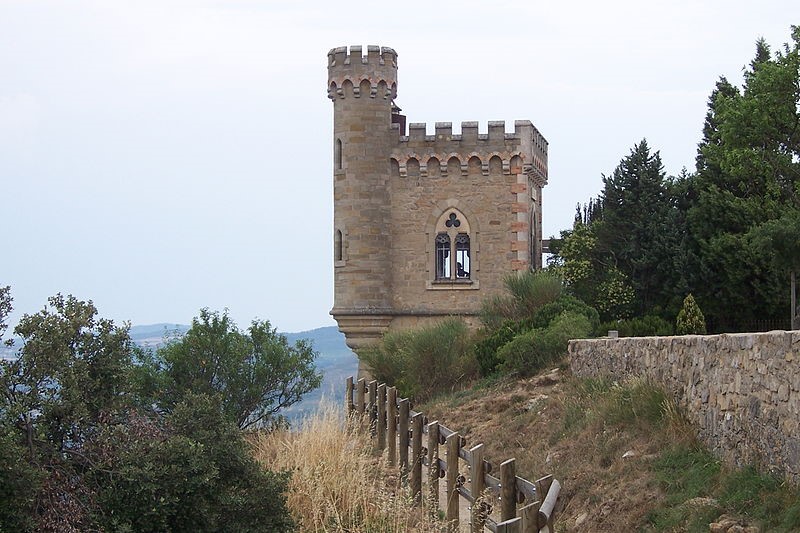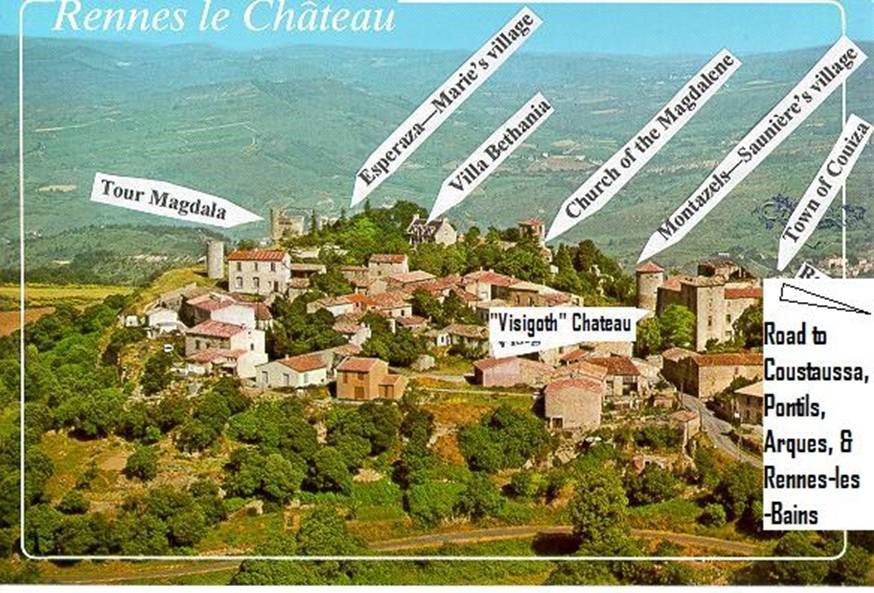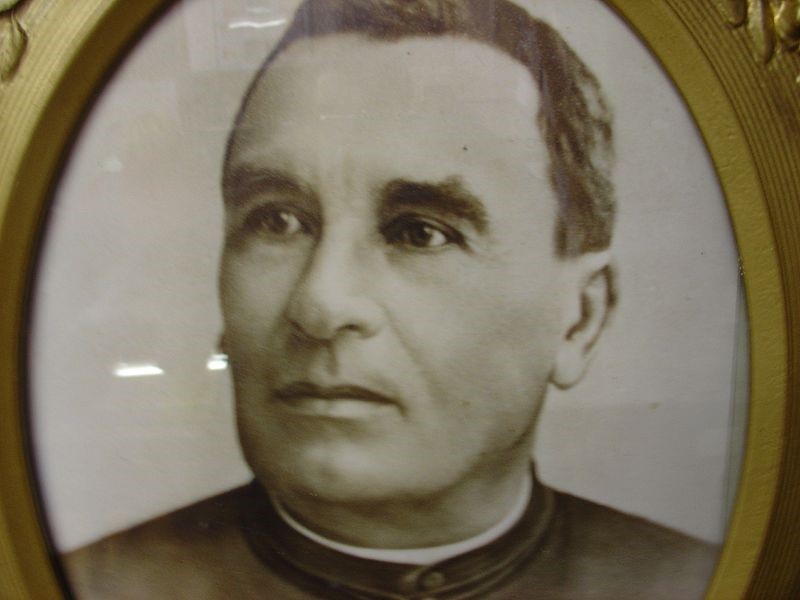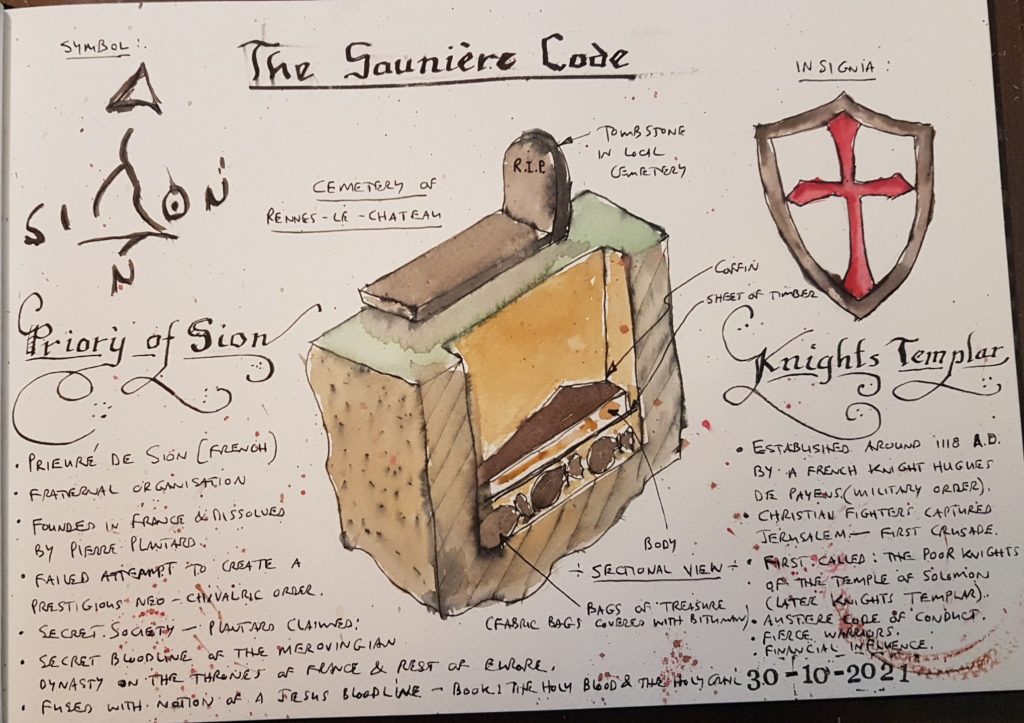
By William Van Zyl (Nov 2021).
The muffled scoop and thump of a spade and pick disturbed the dead. The unexpected sound – at 1:15 am – sent a shiver through the cemetery. The moist soil and decaying bodies were disturbed. Though many of the dead were at peace, the sound of spades and picks at that unholy hour of the night sent a whisper from grave to grave.
A couple of swords, a lance, and a spear – guarding the burial site – were pegged firmly into the ground next to the four working men. The silhouettes of the weapons looked like a forgotten battlefield. Chain mail, a knight’s helmet, and red and white knight insignia glimmered in the moonlight. The red cross juxtaposed on a white background had a message.
It is Sunday morning, 2 August 1310. France, Rennes-Le-Chateau. The small village is asleep.
The priest, Raphael Garnier, lays awake on his bed. He had prayed over the dead body late that night. The Knight Templars are burying their dead.
A black silhouette – outlined as a Roman Catholic Church – was studded against the half-crest moon in the background. Mysterious tar-sealed bags – were waiting quietly to be buried. Why waterproof the body? Or was there something else in those sinister bags?
Darkness drenched the graveyard; the only light visible was from two short candles. One on the outside and one flickering nervously in a small niche inside the short trench. The groaning organ and the angelic voices of the choir were silent – holding their breath. They had to keep the secret. The beautifully shaped men and women in the stained glass artwork were staring at the activities in disbelief. The yellow, red, marigold, cerise and periwinkle faces were draped in cold shadows. They were witnessing something very extraordinary. They wouldn’t be able to tell. They had to stay silent for almost five hundred years.
An owl hooted: “Hoo-hoo; salvation belongs to the Lord.”
The slither of moon was now being curtained by a couple of small grey clouds; the sky studded with several bright stars. Polaris anchored the light-swirl. A couple of freckles and small blemishes blotted out some of the stars. The night was covered in secrecy.
The waterproofed bitumen bags made high pitched clinking and clanking sounds.
“Sshhh! Slowly move the bags, slowly.”
The black-tarred bags laid innocently at the bottom of the grave. A large plank followed on top of the bags. Then the body in the coffin was lowered carefully into the trench with two suspending ropes.
Finally, the four men could breathe normally again. The burial was complete – the hole in the ground was filled with fresh, moist soil.
————-0————–
The leader of the four knights entered the church with a candle; he then carefully knocked a hollow wooden baluster out of position with the back of his dagger. Several tiny ants were disturbed. The knight placed two pieces of parchment into the top of the baluster. He carefully tapped the baluster back in position. In the baluster cavity’s pitch dark belly, a couple of excited ants ran across the ink-map on the parchment. They are inspecting the lines. The second group of ants find a secret code on the second piece of parchment. Would they be able to decipher it?
————-0————–
“Father Raphael, thank you for giving up the space in your cemetery. Our friend will rest in peace. God bless you.”
Father Raphael formed a cross with his right hand. His hand moves from his head to his chest and then across to both his shoulders. Reverently he said:
‘Ave Maria, gratia plena,
Dominus tecum.
Benedicta tu in mulieribus,
et benedictus fructus ventris tui, Iesus.
Sancta Maria, Mater Dei,
ora pro nobis peccatoribus,
nunc, et in hora mortis nostrae.
Amen.’
God bless you, my brothers.
End of the introductory short story (fiction based on what possibly could have happened – speculation).
————-0————–
Table of Contents
My theory on ‘Where did the wealth of Sauniere come from’?
Many theories, including conspiracy theories, attempted to uncover and explain how Sauniere became wealthy. Did he discover unimaginable treasures in the cemetery? Who buried it there, and why? We know that he received about 150 letters a day – selling prayers to people. It has also been reported that Sauniere was an entrepreneur. He had the skill to make money. But the lavish lifestyle he led – all of a sudden – could not be explained. He and his housekeeper kept a secret that went to the grave with them. That is what makes the true story so intriguing. The introduction to this article – the Knight Templars burying the treasures in the graveyard – is my theory. I think I have solved it.
If I were a member of the Templars, I would bury treasures in and around a church. Why? So the Christians could benefit when it is found. I think the Templars who buried the treasure at Rennes Le Chateau were killed, and they could not communicate the secret. So, they knew someone would eventually find the parchments – containing the map and codes. It happened that way – Sauniere found the parchments.
The original story:
If you haven’t read one of the most intriguing true stories ever – Rennes Le Chateau – here is a synopsis:
Father Sauniere was posted to Rennes-le-Château at age 33 as the parish priest with no much money to spend. Those days, he would be regarded as being poor. He earned only about 900 French francs then. But suddenly, he was seen spending lots of money more than he could ever earn performing the duties of a parish priest.
Before this time, his carefully kept record books showed he was in debt. The bishopric accused him of mass trafficking or Simony in religious terms and was tried, found guilty and suspended.
His expenditure at some point was claimed to have grown to as much as several hundred thousand French francs, which he also failed to declare its source at the trial. This all raised some suspicion about the origin of Sauniere’s wealth. For a Priest who would spend that much but officially earns 900 francs annually should have a vast supply from which he suddenly had much money to spend. He often gives the explanation that it was a gift from people, but this leaves much to be accepted as being true.
According to findings, the locals reported he and his loyal housekeeper, Marie Denarnaud, would dig at nights in the graveyards. There are records to the municipal council filing complaints about his diggings and troubling of the dead by digging on their graves. When Father Sauniere died in 1917, interactions with Marie, his loyal housekeeper, who also was involved in assisting Father Sauniere during the digs, suggested some treasures might actually be hidden somewhere.
After about 36 years after Sauniere died, she told Noel Corbu, who bought the estate from her in 1946, she would reveal a secret to him only on her deathbed that will forever make him rich and powerful. Unfortunately, her condition left her unable to speak or even write because of a serious stroke she had prior to her death. She and her master took the secret, and the mystery of Rennes-le-Château with them to the grave and the search continues from there thereafter.
The small community of Rennes-le-Château got its attraction from various claims made in the 50s and the 1960s. This involves the Blanche of Castile, the Knights Templar, the Merovingians, the Cathars, and the treasures of the temple of Solomon, which holds the treasures of the Visigoths. The Visigoths are believed to contain the Ark of the Covenant and the candlesticks in Jerusalem’s temple, which has seven branches (the menorah).
Credit: https://www.renneslechateau.com/mysteries-of-rennes-le-chateau-and-sauniere/





———0————-
The Da Vinci Code.
Dan Brown, the writer of the novel ‘The Da Vici Code,’ was so inspired by the Rennes Le Chateau story that he named one of the characters Sauniere in his book.
Jacques Saunière (Saint-Clair) is the curator of the Louvre, head of the secret Priory of Sion, and the grandfather of Sophie Neveu (The Da Vinci Code – By Dan Brown).
Asphalt (also called bitumen) is a substance used for waterproofing.
The Knights Templars had to devise a plan to preserve the treasures before going into the ground. The fabric bags, which contained all the silver, gold, jewellery, and other treasure, were waterproofed with bitumen.
What is Bitumen?
Natural bitumen is the thickest form of petroleum there is, made up of 83% carbon, 10% hydrogen and lesser amounts of oxygen, nitrogen, sulphur, and other elements. It is a natural polymer of low molecular weight with a remarkable ability to change with temperature variations: at lower temperatures, it is rigid and brittle; at room temperature, it is flexible; at higher temperatures, bitumen flows.
The fabric bags, buried by the knights, were covered with asphalt. The bitumen sealed and protected the precious and prized items.
More about bitumen during the ages.
Historians believe that Noah used asphalt in the construction of the ark. The Biblical text reads that the ark was treated with “pitch” (a bituminous substance) inside and out. Canoes and dugouts in the early days were also made watertight with pitch.
There are numerous other references in Christian scripture to what we now know was asphalt.
The book of Genesis states, when describing the construction of the Tower of Babel around 2000 B.C., “they had bricks for stone and slime for mortar.” In the Septuagint, the Greek version of the Bible, the word slime is translated as “asphaltos”, and in the Latin version, “bitumen.”
The second chapter of Exodus states that the basket of bulrushes (wetland plants) where his mother put Moses was waterproofed with asphalt. Verse three reads, “And when she could no longer hide him, she took for him an ark of bulrushes, and daubed it with slime and pitch, and put the child therein; and she laid it in the flags by the river’s brink.”
Credit: http://asphaltmagazine.com/early-uses-of-asphalt/
The use of Asphalt in Medieval Times
During the Medieval Times, Man also used different waterproofing techniques. In the XIII Century, the use of lime as a waterproofing element was resumed to waterproof some edification and also castles, fortifications or small towns that were not geographically protected by a hill most of the times were surrounded by a moat, which during its construction were regularly coated with lead or thick bitumen glued to ensure its waterproofing.
Copyright © 2021 by William Van Zyl
The Sauniere Code.
All rights reserved. This book or any portion
thereof may not be reproduced or used in any manner
whatsoever without the express written permission of the
publisher except for the use of brief quotations in a book review.
Published by Five House Publishing (New Zealand)
First Publishing, 2021

More eBooks and articles are available at https://fivehousepublishing.com/
More about the author at http://williamvanzyl.com/